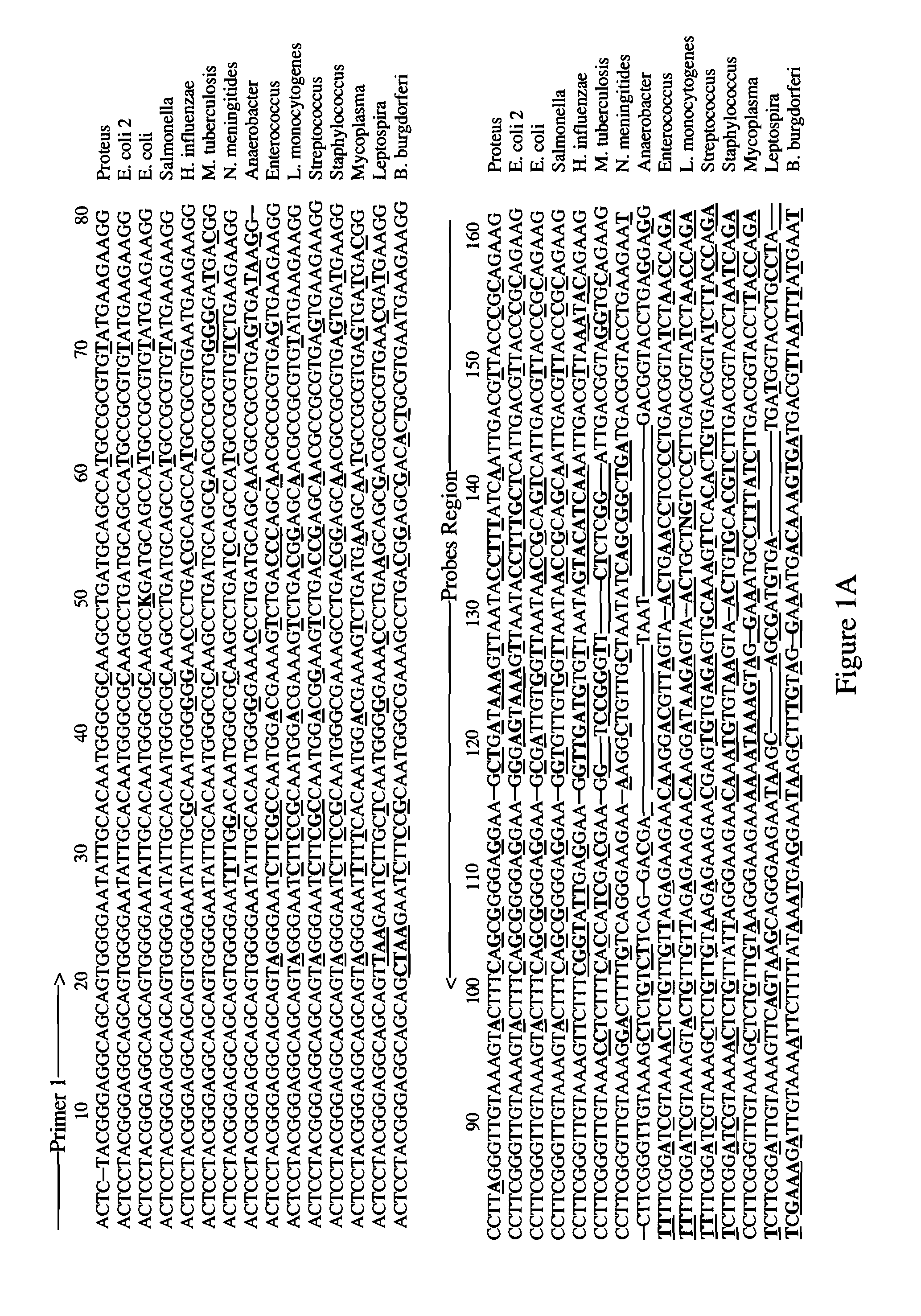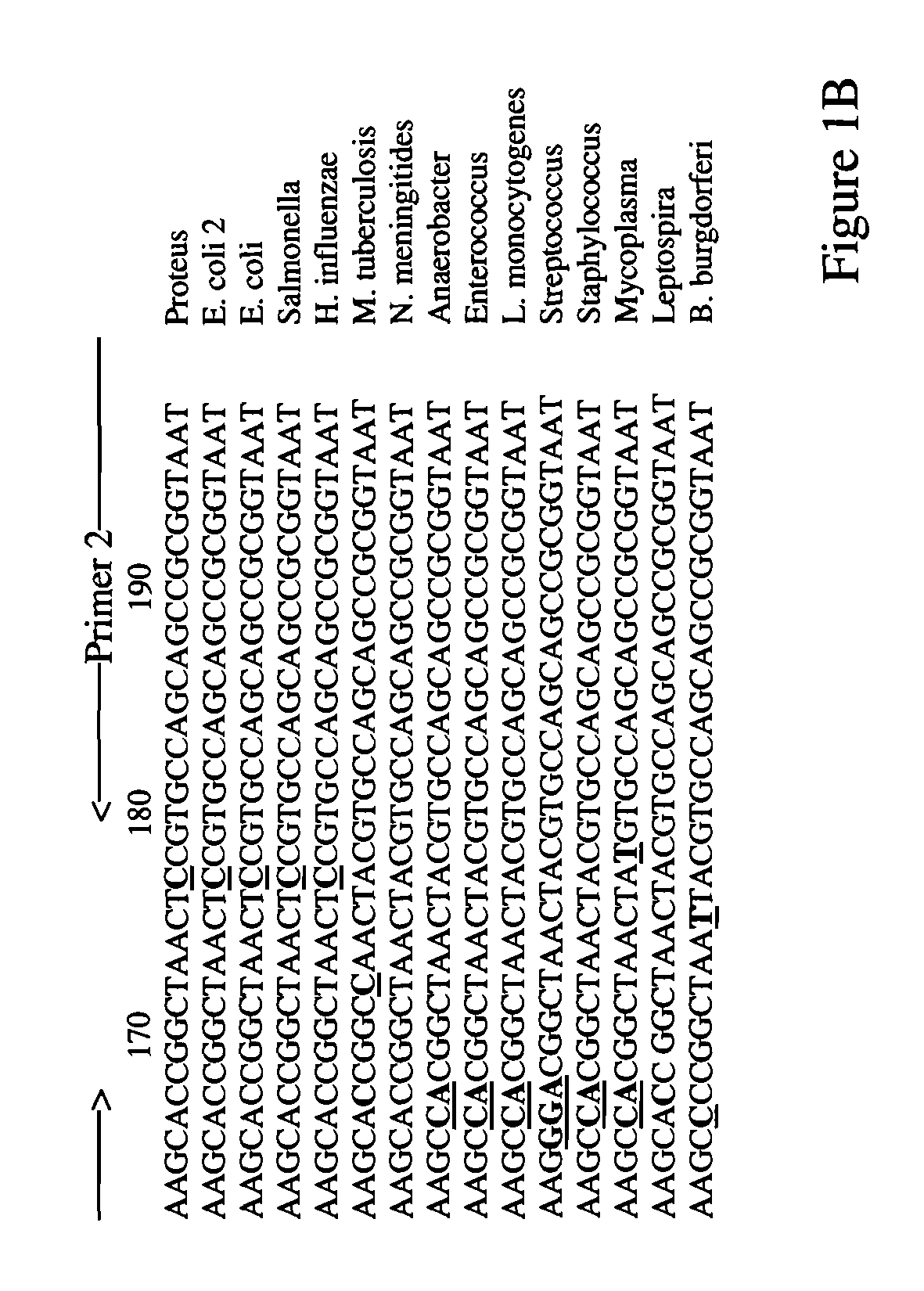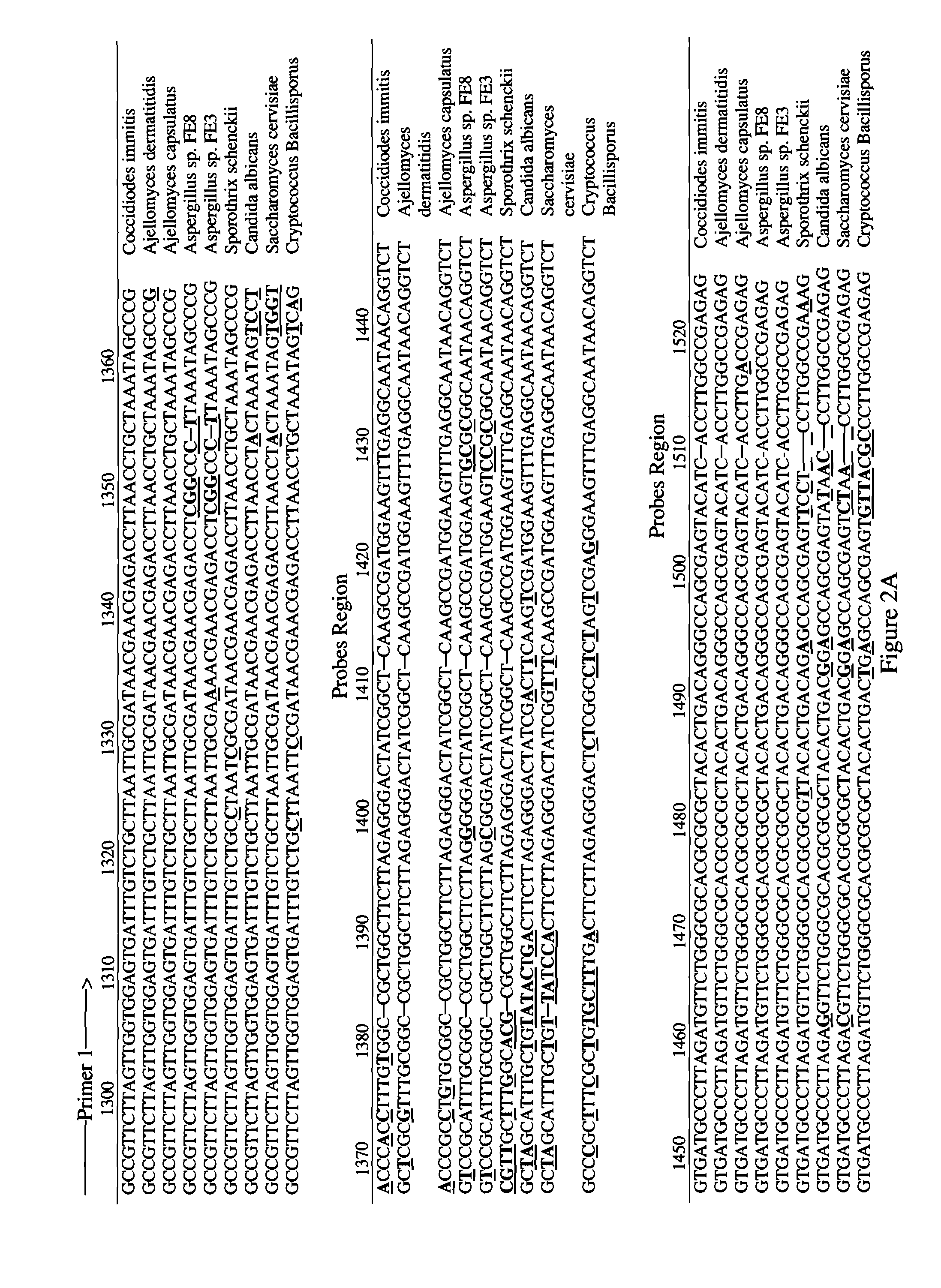Oligonucleotide microarray for identification of pathogens
a technology of oligonucleotide microarray and pathogen detection, which is applied in the field of test kits and can solve the problems of difficult to provide accurate diagnosis, increase the “noise” of electrophoresis gel, and procedures that require highly trained staff and are very time-consuming, so as to achieve easy and rapid determination
- Summary
- Abstract
- Description
- Claims
- Application Information
AI Technical Summary
Benefits of technology
Problems solved by technology
Method used
Image
Examples
example 1
[0061]DNA Microarray Fabrication Process
1. Glass Surface Washing.
[0062]Clear slide immersed in H2SO4 / H2O2, 2:1 for 30 min. Wash with H2O three times, and then with methanol for twice. Dry under a stream of pressed air, then baked at 80° C. for 10 min.
2. Glass Silanization.[0063]Sonicated in 2% N-(2-aminoethyl)-3-aminopropyltrimethoxysilane (EDA) in 1 mM HAc for 30 min at room temperature (RT). Wash with H2O three times, and then with methanol for twice. Dry under a stream of N2, then baked at 110° C. for 15 min.
3. Modify Silanized Slide with Heterobifunctional Crosslinker
[0064]Immersed in the crosslinker solution (384 mg PDITC (2 mmol) in 80 ml 10% anhydrous pyridine in DMF) for 2 hr at RT. Rinsed with the DMF three times and then dichloroethane twice. Dry under N2.
4. Microarray Print and DNA Immobilization
[0065]Spot 40 uM NH2-oligodeoxynucleotide (ODN) in 0.1M carbonate buffer (pH 9.0) on the active glass slide at 60% humidity. React over 1 hr at 37° C. under saturated humidity. Ri...
example 2
DNA Microarray Hybridization Process
1. PCR Amplification and Labeling
[0068]Add 1 ul DNA sample to 100 ul PCR reaction buffer, which contains 10 mM Tris-HCl (pH 9.0), 50 mM KCl, 3.75 mM MgCl2, 0.1% Triton X-100, 0.1 mM dNTP (each), and 0.2 uM Cy5 labeled primers (each). Then add 5 u Tag DNA Polymerse and PCR amplified at the following temperature condition:[0069]i). 96° C. 2 min[0070]ii). 95° C. 20 s[0071]iii). 60° C. 20 s[0072]iv). 72° C. 30 s[0073]Go to step ii for 28 cycles.[0074]v). 72° C. 2 min[0075]The reaction takes about 1 hr and 20 min total.
2. DNA Microarray Hybridization[0076]Dilute the PCR solution with 5 volumes hybridization buffer which contain 0.75M NaCl, 75 mM sodium citrate, and 0.1% SDS pH 7.2. Hybridization at 61° C. for 1 hr.
3. DNA Microarray Washing[0077]Wash the hybridized slide with 0.3M NaCl, 30 mM sodium citrate, and 0.1% SDS for 15 min for 3 times at 50° C., then wash with 0.3M NaCl, 30 mM sodium citrate, for 15 min at 50° C. Rinse with H2O then dry under p...
example 3
[0079]Cells are harvested directly from sections of tissue isolated from a patient. DNA is extracted from these cells using any known protocol. About 2-10 ng of DNA is amplified via PCR using two primer pairs: SEQ ID NOS: 1-2 and SEQ ID NOS: 7-8. [32P]-dCTP is included in the PCR reaction in order to label the amplified DNA, thus generating target nucleic acid detecting reagents with marker molecules.
[0080]The target nucleic acid detecting reagents with marker molecules are purified via spin column in order to remove excess [32P]-dCTP and denatured by incubation at 95° C. followed by immediate cooling on ice. The denatured target nucleic acid detecting reagents with marker molecules are then incubated under highly stringent conditions in the presence of an oligonucleotide microarray that comprises probes comprising SEQ ID NOS: 13-52. The hybridization is for 2 hours in 0.5 M NaHPO4, 7% sodium dodecyl sulfate (SDS), 1 mM EDTA at 65° C., followed by 3 washes in 0.1×SSC / 0.1% SDS at 68°...
PUM
| Property | Measurement | Unit |
|---|---|---|
| diameter | aaaaa | aaaaa |
| temperatures | aaaaa | aaaaa |
| temperatures | aaaaa | aaaaa |
Abstract
Description
Claims
Application Information
 Login to View More
Login to View More - R&D
- Intellectual Property
- Life Sciences
- Materials
- Tech Scout
- Unparalleled Data Quality
- Higher Quality Content
- 60% Fewer Hallucinations
Browse by: Latest US Patents, China's latest patents, Technical Efficacy Thesaurus, Application Domain, Technology Topic, Popular Technical Reports.
© 2025 PatSnap. All rights reserved.Legal|Privacy policy|Modern Slavery Act Transparency Statement|Sitemap|About US| Contact US: help@patsnap.com



